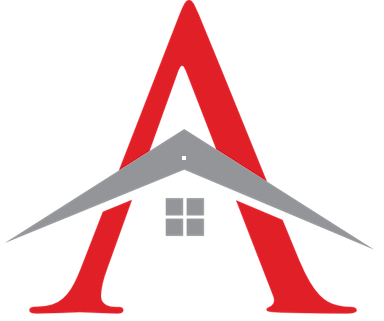Need Help with Concrete Leveling? 3 Tips from the Pros!
As homeowners, we all want our property to be safe, functional, and looking its best. But when you’ve got uneven concrete in your driveway, sidewalks, or patio, it can be more than just an eyesore—it’s a hazard.
Trip hazards, water pooling, and even potential foundation damage can arise from neglected concrete issues. Whether you're noticing cracks in your concrete slabs or dealing with sinking sections of your concrete surface, leveling is a must to ensure your home stays in top shape.
In this blog, we’ll walk you through three essential tips for effective concrete leveling, drawing from our experience working in the Kansas City area. We’ll cover the causes of settling, how to choose the right concrete floor leveling methods, and how to keep your surfaces level long-term.
Tip 1: Understanding the Causes of Concrete Settling
It’s easy to see a sunken concrete slab and think it's a quick fix, but understanding why the slab is sinking is crucial for a long-lasting solution. In my experience, the root cause of concrete settling can vary, but there are a few common culprits:
Soil erosion: Over time, the soil beneath your concrete shifts, either from heavy rainfall or poor drainage. If water can’t flow properly around your home, it seeps into the ground, washing away the support underneath your concrete surface.
Improper compaction: If the soil wasn’t compacted correctly before the concrete was poured, it will eventually settle. This leaves gaps or voids beneath your square footings, which leads to your concrete sinking.
Poor drainage: If rainwater or irrigation systems aren’t directed away from your concrete, you’re likely to experience water pooling. Over time, this can wear away the soil under your concrete slabs, causing them to shift and settle unevenly.
Identifying the cause of the problem is the first step in getting your concrete lifted back to where it should be. Once you’ve got that figured out, you can choose the best method to level it.
Tip 2: Choosing the Right Concrete Leveling Technique for Your Project
When it comes to lifting concrete, you have options. Depending on the size of the project, your budget, and how long you want the repair to last, you’ll need to choose the right concrete repair method. Here’s a breakdown of the most effective techniques:
Mudjacking
Mudjacking involves pumping a slurry made from cement, sand, and water under the slab. This slurry, often referred to as stone slurry, fills the voids beneath the concrete, lifting it back into place. It’s a tried-and-true method that works well for larger slabs, and it’s more cost-effective than other options. However, it’s not always the longest-lasting fix, as the slurry can break down over time.
Polyurethane Foam Concrete
If you’re looking for a more permanent solution, polyurethane foam concrete (or concrete foam) might be the way to go. This method, called polyjacking, uses a lightweight foam that expands after it’s injected under the slab, creating a solid, durable base. The chemical reaction when the foam is injected causes it to expand, filling in voids and lifting concrete in the process. It’s quicker than mudjacking and provides a longer-lasting solution, especially for heavy traffic areas like driveways.
Self-Leveling Overlays
For smaller areas or interior spaces, self-leveling overlays can be a great choice. These products can be applied directly over concrete slabs to smooth out minor dips and imperfections. While it’s not ideal for large, sunken slabs, it’s a quick and relatively cost-effective way to repair slightly uneven concrete.
So, how do you choose the right method? It depends on a few factors, like the size of the project, your budget, and how long you want the repair to last. Feel free to reach out if you’re unsure, and we can help assess your situation.
Tip 3: Maintaining and Preventing Future Settling Issues
The last thing anyone wants is to fix a problem only for it to come back. Luckily, with the right maintenance practices, you can help prevent future concrete leveling costs. Here are a few ways to keep your concrete in good shape:
Sealing your concrete: One of the simplest ways to protect your concrete surface is by applying a sealant. This helps keep water from seeping into the cracks and eroding the soil underneath.
Proper drainage: Make sure water is directed away from your concrete with gutters, downspouts, and grading. Without proper drainage, you’ll end up with the same problems down the line.
Monitor for early signs: Keep an eye on your concrete slabs. If you start noticing new cracks, dips, or pooling water, address the issue immediately. Catching these problems early can save you from a more expensive repair later.
Conclusion
Investing in proper concrete floor leveling methods isn’t just about aesthetics—it’s about safety, durability, and protecting your property’s value. Whether you choose mudjacking or polyjacking, knowing the root cause of the problem and addressing it with the right solution is key.
If you’re dealing with uneven concrete in the Kansas City area, Affordable Mudjacking is here to help. We’ve seen firsthand the difference that professional concrete repair can make, both in appearance and functionality. If you’re ready to get your concrete lifted, feel free to reach out for personalized advice or to schedule a free estimate.
Let’s get those concrete slabs looking and working like new again!

